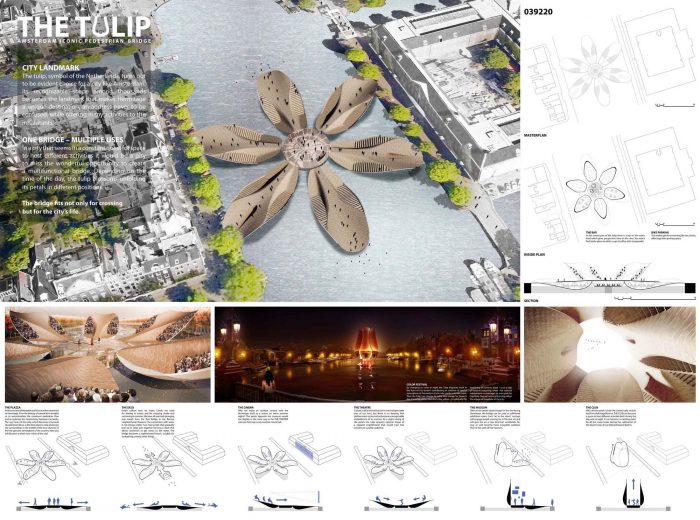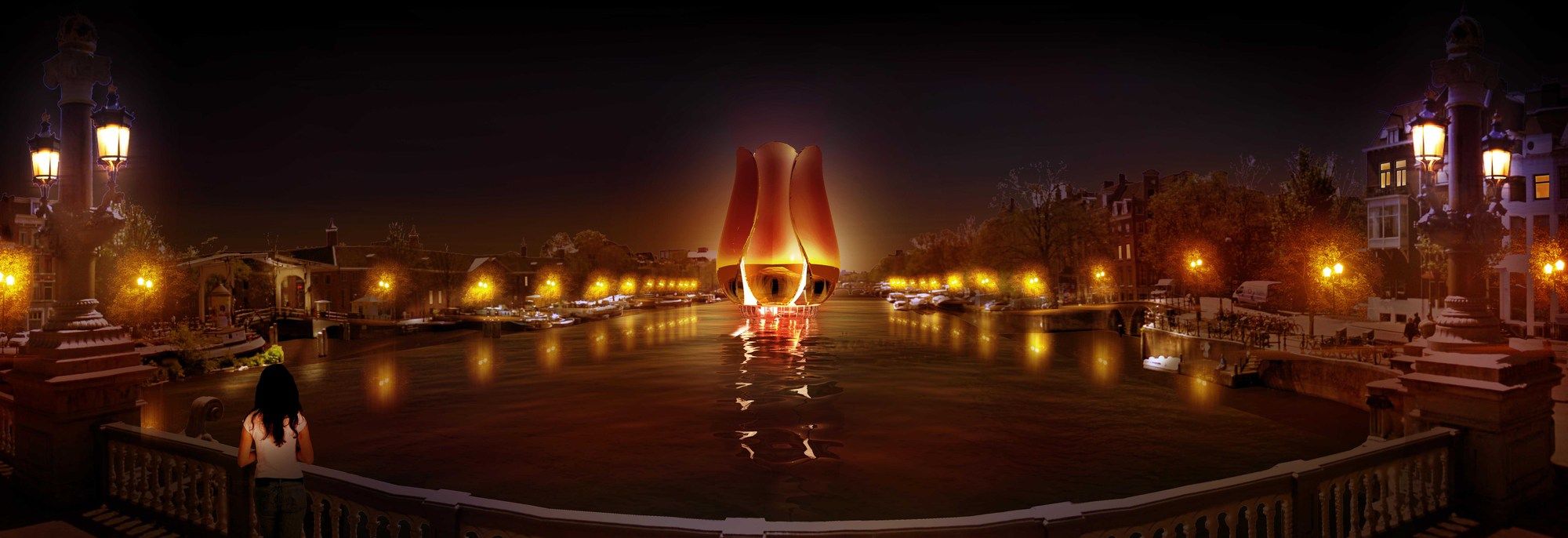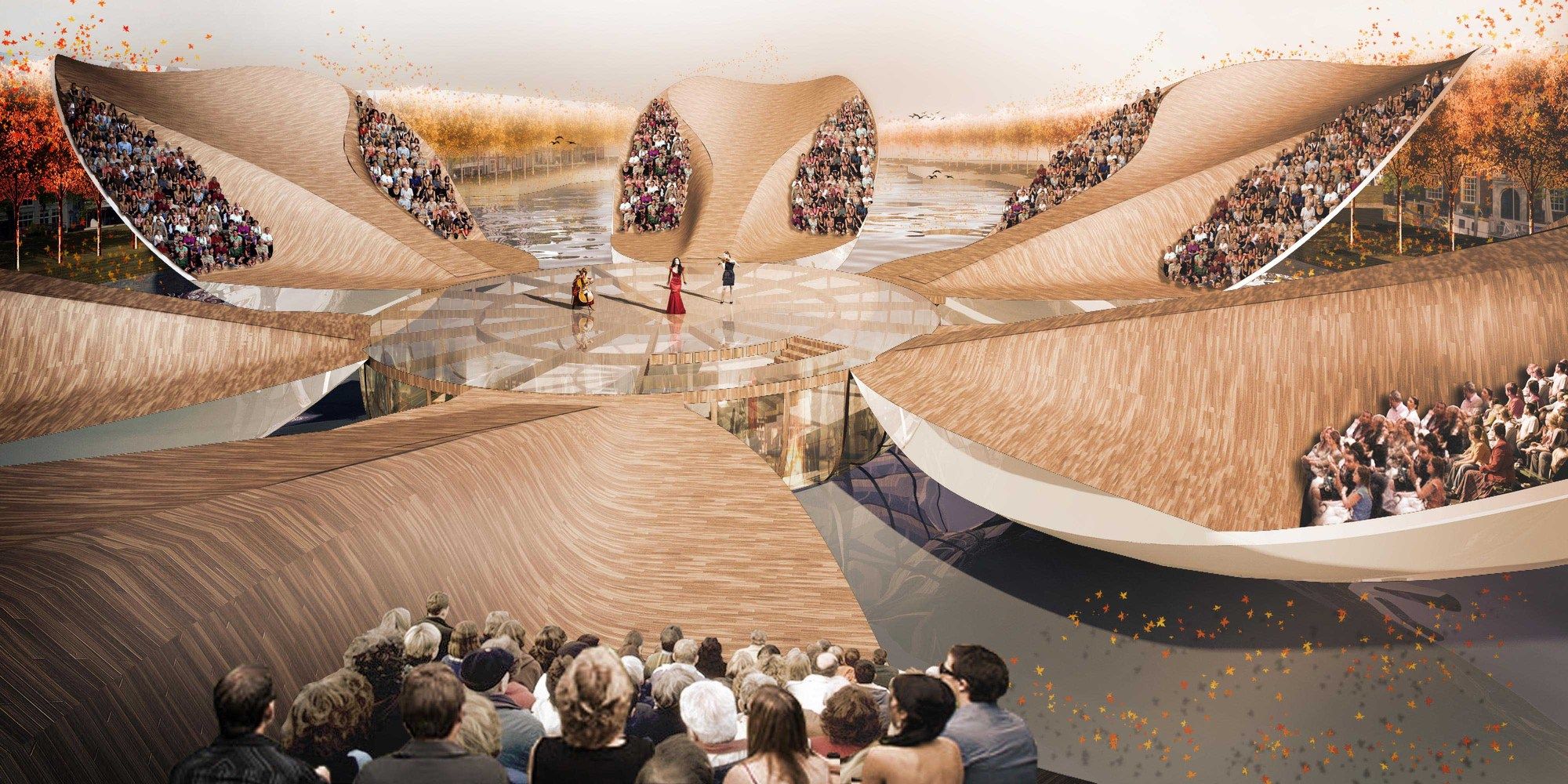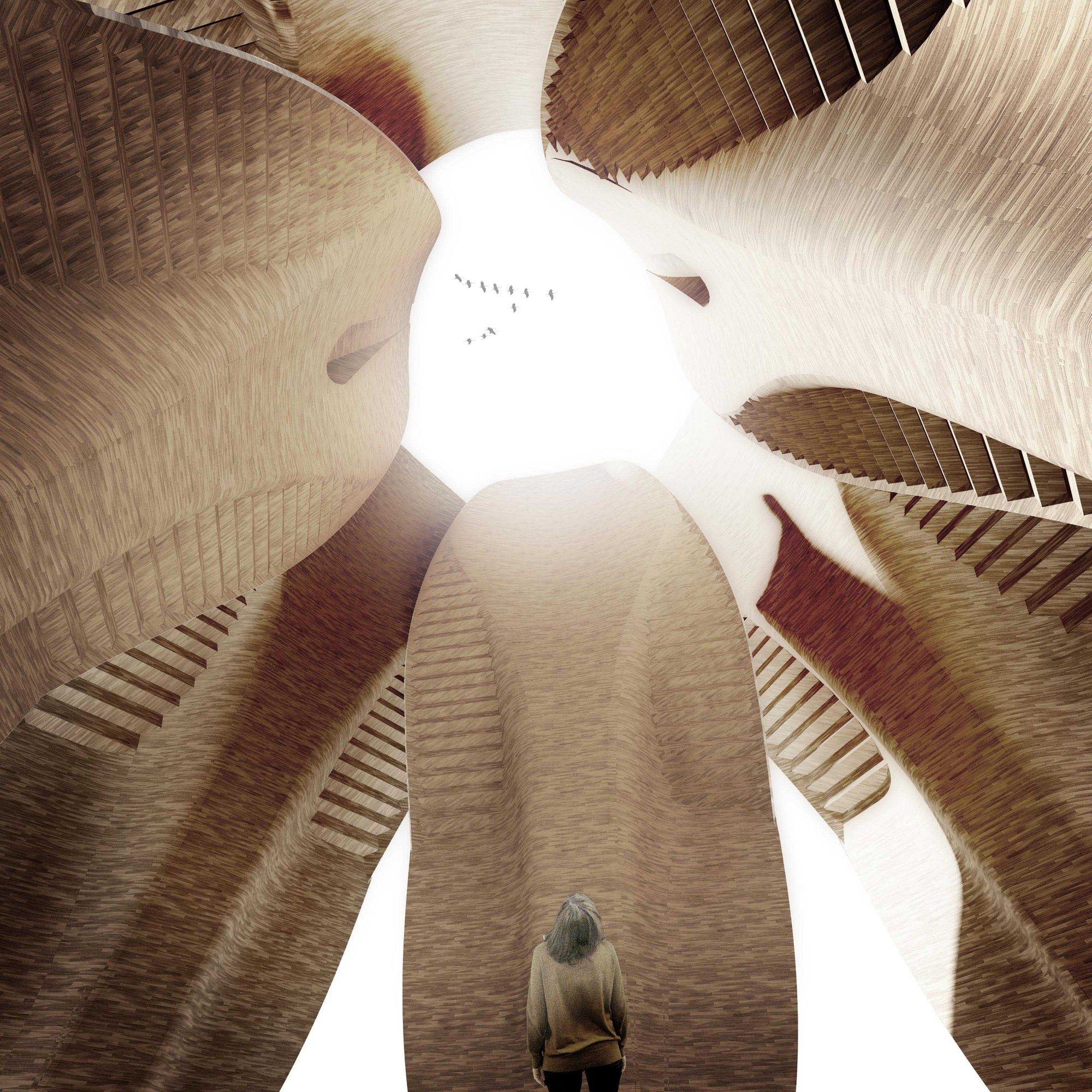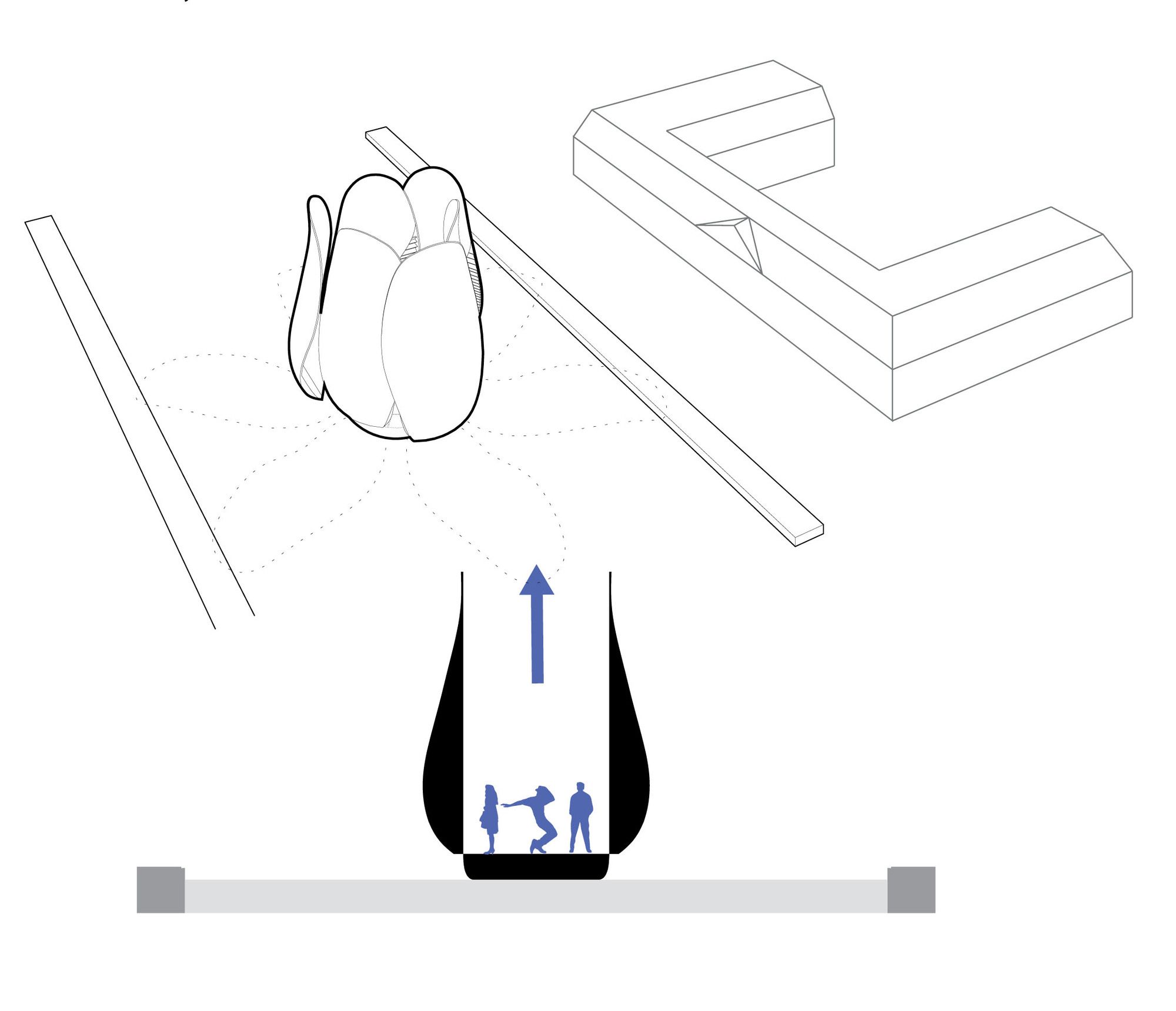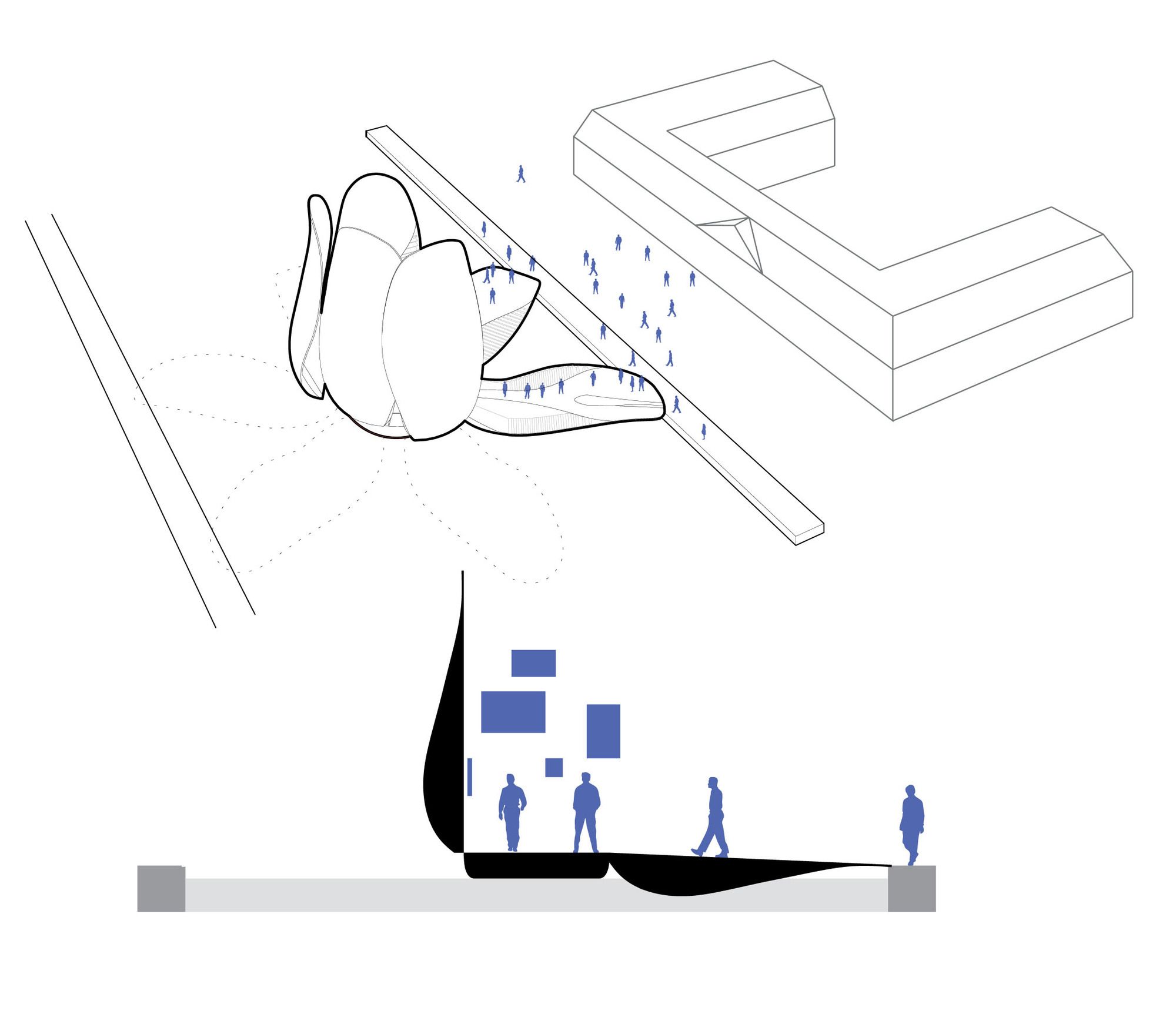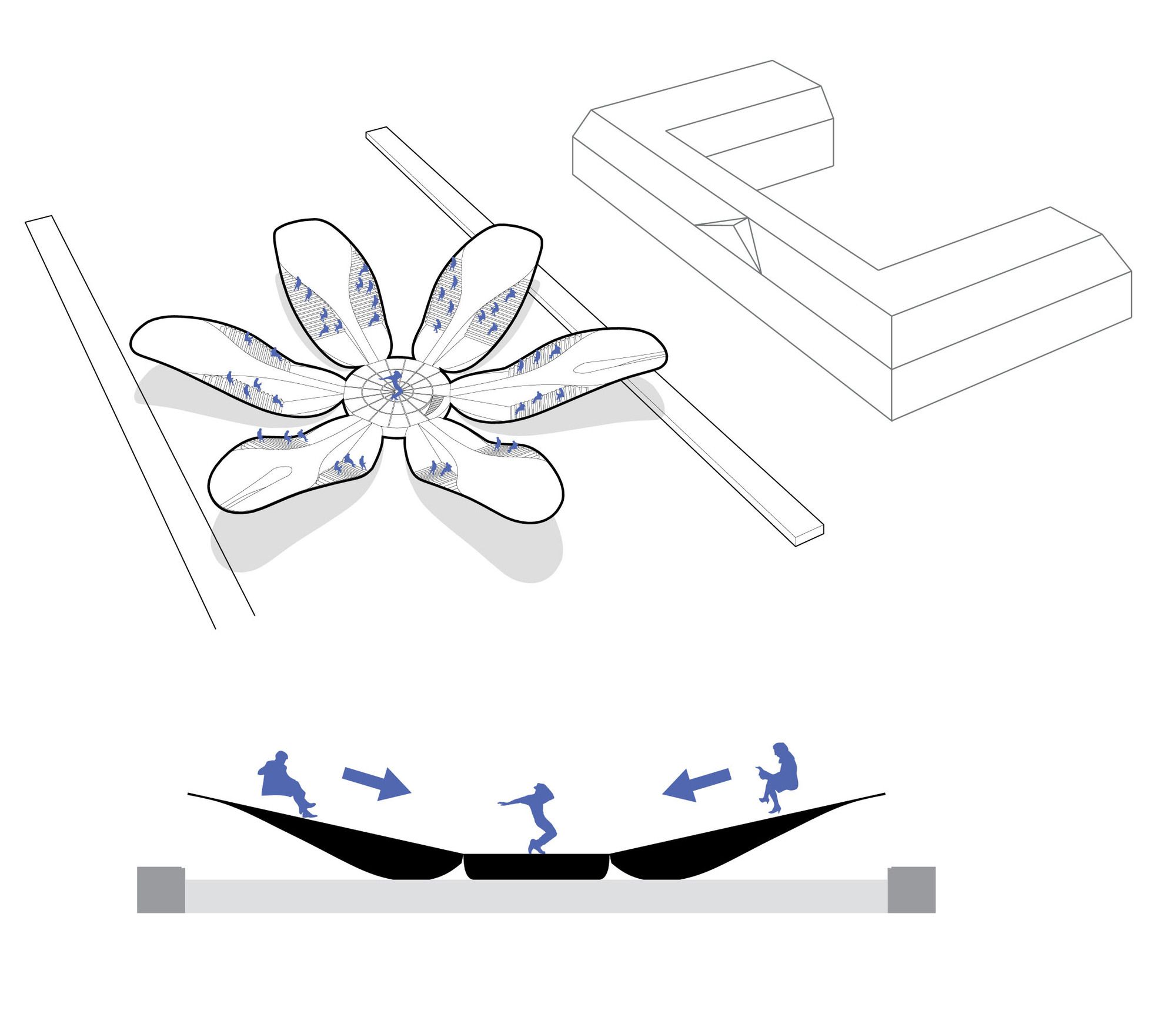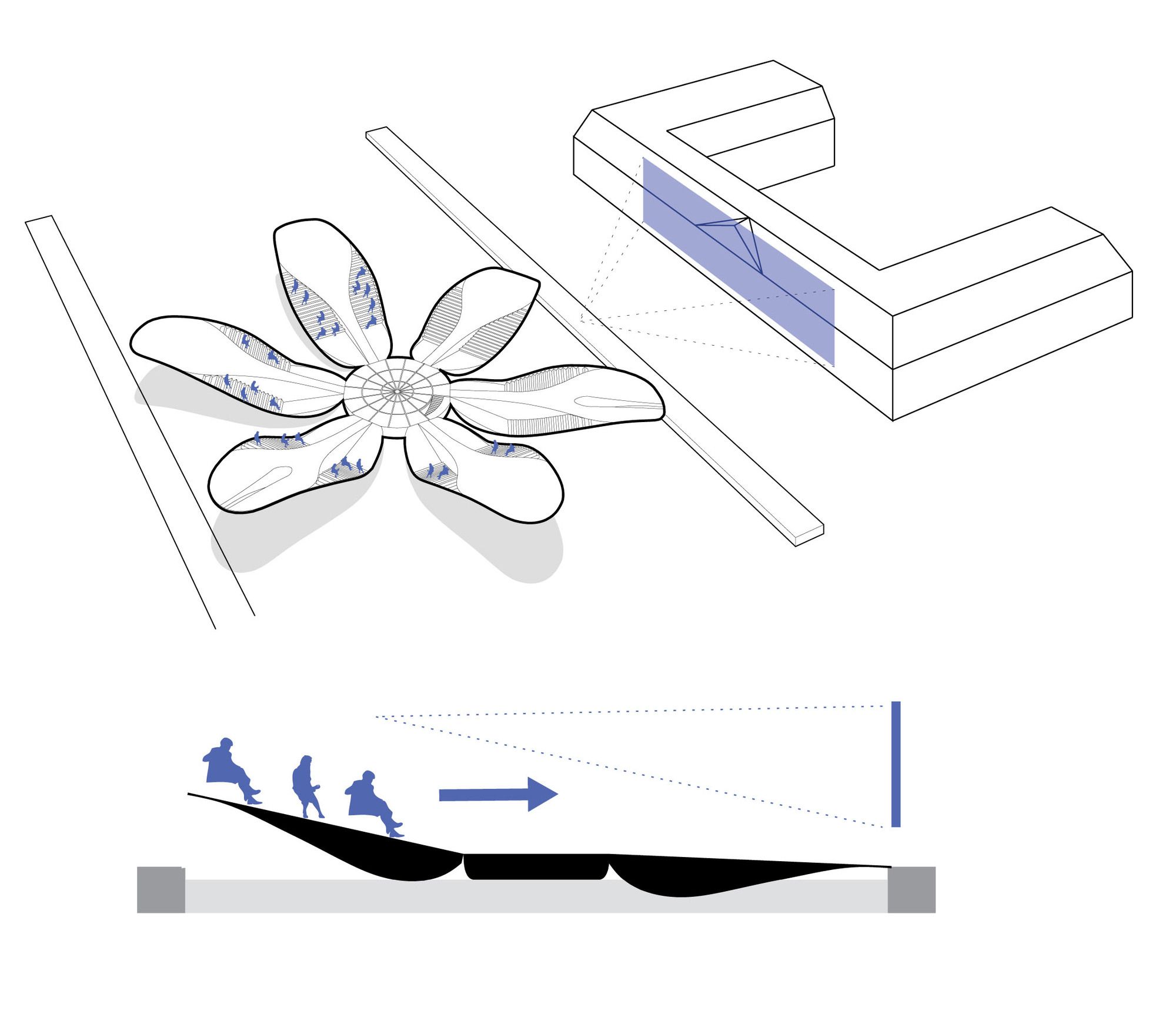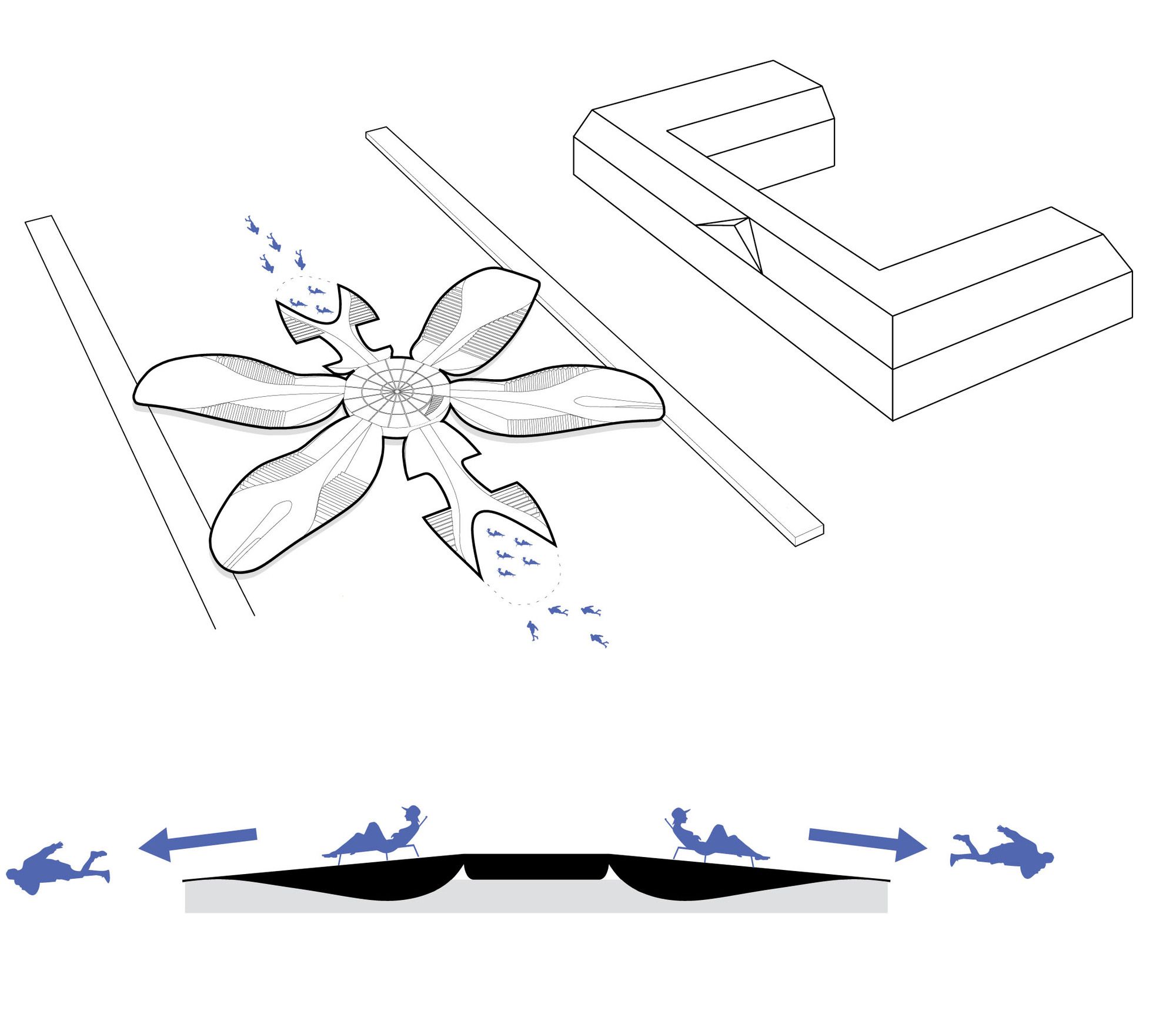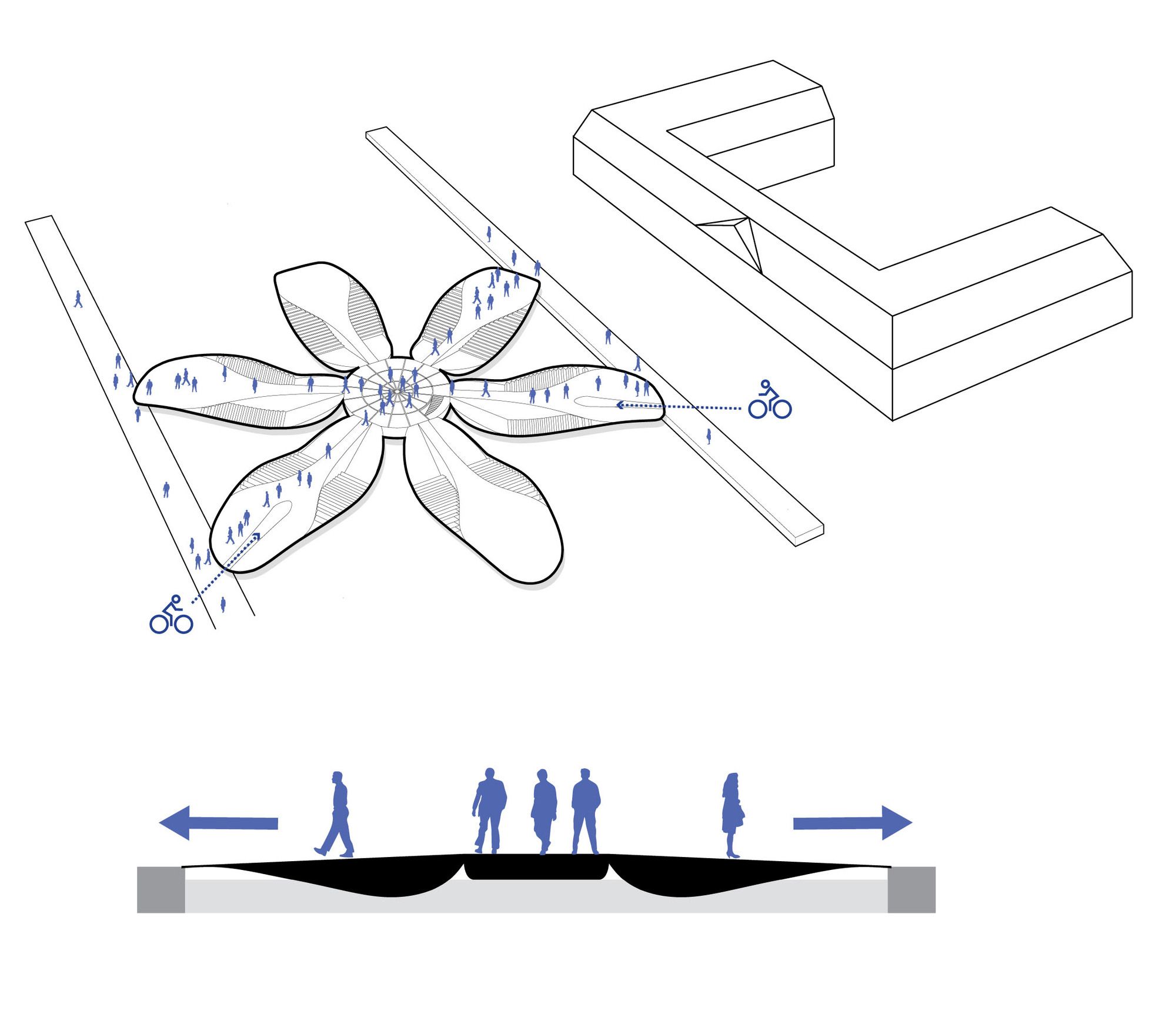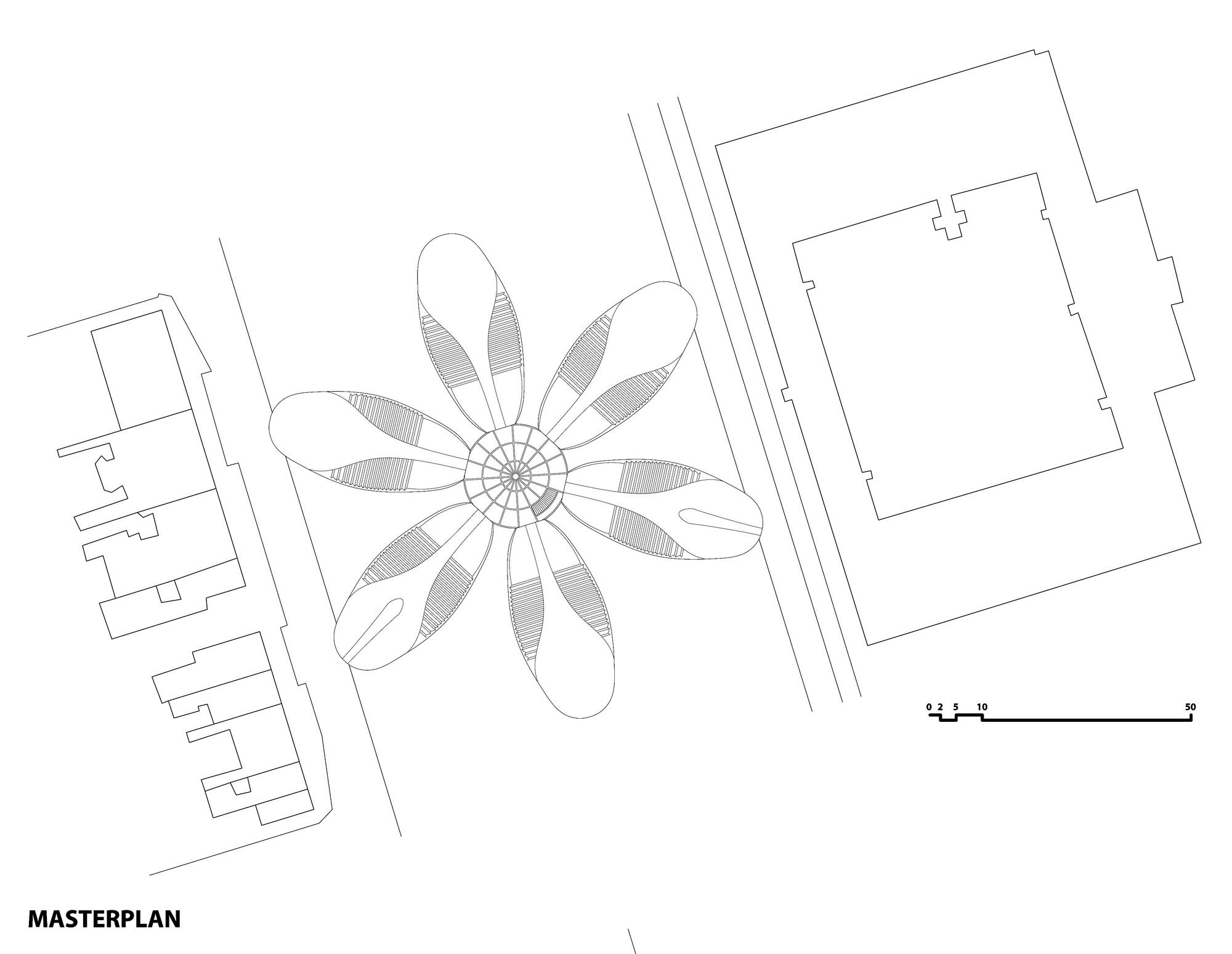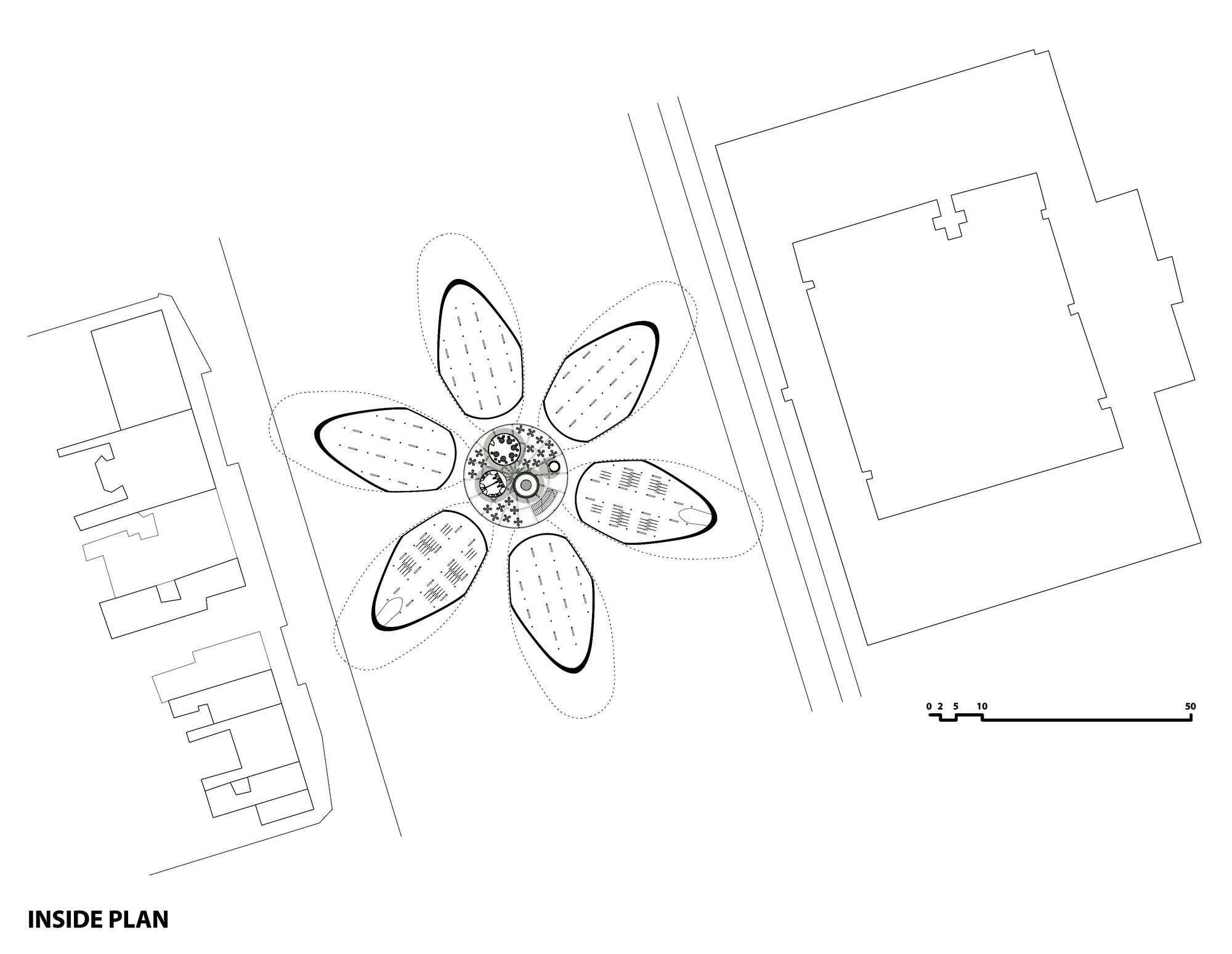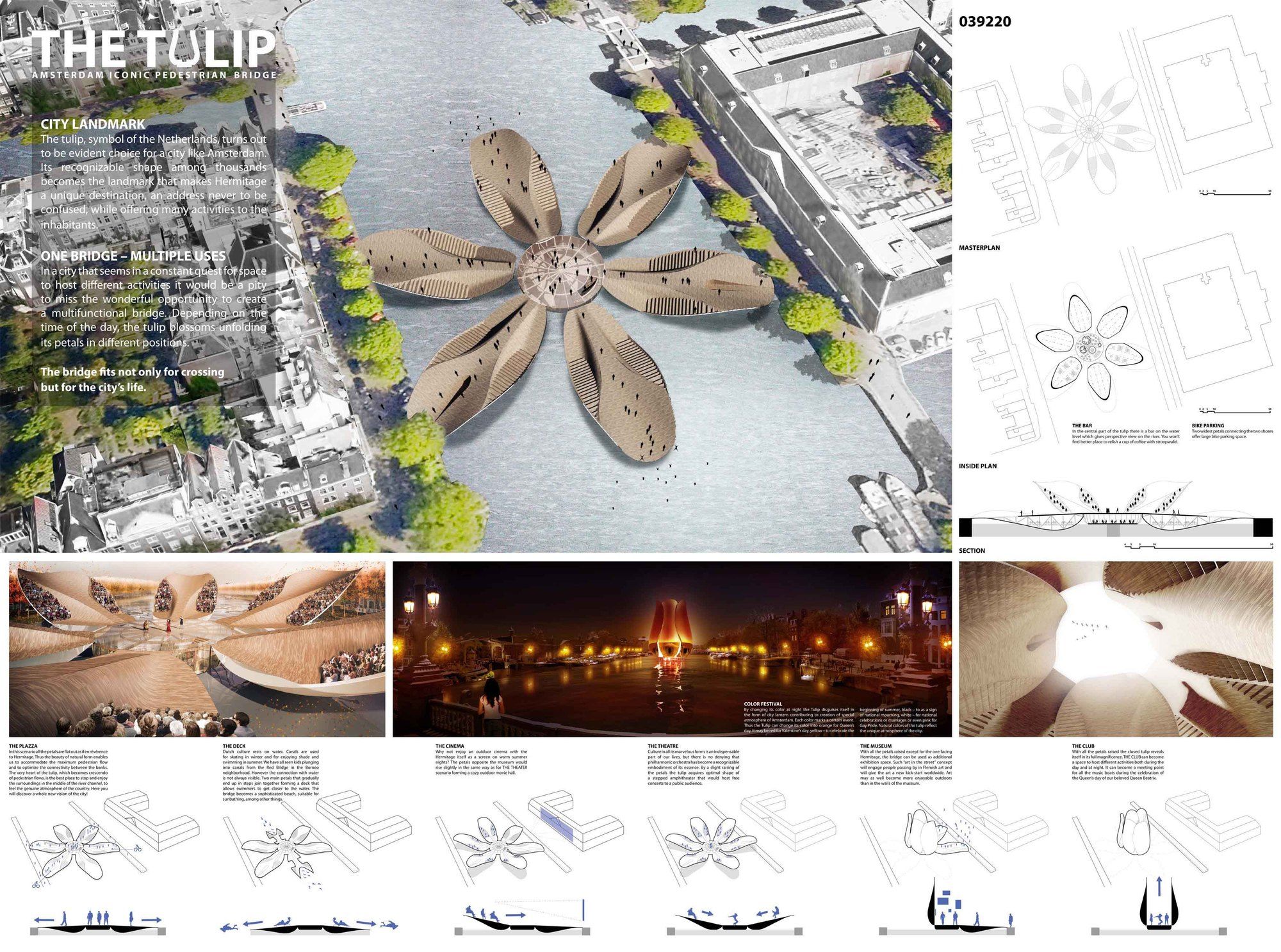When we think of the Netherlands and all its symbols there’s one that emphasizes the memory of the country, multi-colored fields of flowers, more precisely a kind of flower, the tulip. If we refer to the city of Amsterdam, a city notorious for its urban events, and its connection with the hundreds of canals that spread like roots through the city and serves as communication and even living place; it makes sense the approach of Bertrand and Michael Labory Schippan that inspired the Dutch tulip to design a unique landmark for the city of Amsterdam , a multifunctional pedestrian bridge, where the role of crossing point between one bank and another unite to the function of clustering people at events, creating public space on the river .
If we refer to the city of Amsterdam, a city notorious for its urban events, and its connection with the hundreds of canals that spread like roots through the city and serves as communication and even living place; it makes sense the approach of Bertrand and Michael Labory Schippan that inspired the Dutch tulip to design a unique landmark for the city of Amsterdam , a multifunctional pedestrian bridge, where the role of crossing point between one bank and another unite to the function of clustering people at events, creating public space on the river .
 Depending on the time of day, the tulip blossoms unfolding its petals in different positions . All petals unite in a Piazza, the central part of the petals and the Piazza are flat allowing the fluid circulation of users between margins. The heart of the Tulip is the epicenter of emotions and sensations, there we can find the focal point for the observation of the city from another perspective. Tulip petals can be configured in various environments, needing only to change its slope to reconfigure space.
Depending on the time of day, the tulip blossoms unfolding its petals in different positions . All petals unite in a Piazza, the central part of the petals and the Piazza are flat allowing the fluid circulation of users between margins. The heart of the Tulip is the epicenter of emotions and sensations, there we can find the focal point for the observation of the city from another perspective. Tulip petals can be configured in various environments, needing only to change its slope to reconfigure space. Such spaces could range from amphitheater for cultural events , exhibition space and even one club that closes on itself regarding noise issues, to beach areas and access to the river for bathing and swimming. The two petals that connect both banks have an entry for bikes , with a generous bike parking below them leaving free spce above for its users.
Such spaces could range from amphitheater for cultural events , exhibition space and even one club that closes on itself regarding noise issues, to beach areas and access to the river for bathing and swimming. The two petals that connect both banks have an entry for bikes , with a generous bike parking below them leaving free spce above for its users.
The great Amsterdam Tulip, may also change color at night as a way to reflect the excitement of the city or as a celebration of some special days . This whole project is a reading and a metaphorical reinterpretation of traditional elements of the place , mixing them with the need and desire to create distinct spaces .
This whole project is a reading and a metaphorical reinterpretation of traditional elements of the place , mixing them with the need and desire to create distinct spaces .
By Luis Pina Lopes
designed by: Michael Labory & Bertrand Schippan
designed by: Michael Labory & Bertrand Schippan
designed by: Michael Labory & Bertrand Schippan
designed by: Michael Labory & Bertrand Schippan
club diagram
museum diagram
theatre diagram
cinema diagram
deck diagram
plazza diagram
site plan
plan
section
final competition panel
Courtesy of Michael Labory and Bertrand Schippan


